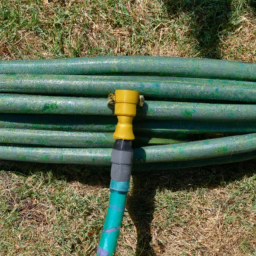Garden Hose Flow Rate How Many GPM
How Many Gallons Per Minute Is A Garden Hose
How Many Gallons Per Minute Is A Garden Hose?
A Guide to Calculating Flow Rate
When deciding on a garden hose, knowing the exact flow rate is essential. Water flow rates help determine the time it takes to fill buckets, water gardens, and other tasks. There are various factors which affect flow rates, so it is important to understand how they interact. This guide will explore the topics of pipe diameter, water pressure, and water volume to calculate garden hose flow rates.
Pipe Diameter
The pipe diameter of a garden hose is the inner diameter which the water passes through. It is usually measured in inches or millimeters and those measurements are denoted as ID. A larger pipe diameter allows for more water to pass through. Choosing the correct pipe diameter is impacted by your desired water pressure, as a larger pipe diameter means less pressure.
Water Pressure
Water pressure refers to the amount of force, usually measured in PSI, which is required to passage the water through the hose. A higher PSI leads to a higher flow rate, while a lower PSI will decrease the flow rate. Most standard hoses operate at a pressure of 60-100 PSI, while smaller diameter hoses can be operated at up to 150 PSI.
Water Volume
The water volume, also known as the flow rate, is the amount of water that passes through the hose per minute. It is usually measured in gallons per minute (GPM). As a general rule, the more water that passes through the hose, the better. However, this needs to be balanced with the other factors which affect flow rate and should be considered when choosing a garden hose.
Calculating Flow Rate
To calculate the flow rate of a garden hose, you need to measure the pipe diameter (ID), water pressure (PSI), and water volume (GPM). To do this, you can use a simple equation: GPM ID x PSI/608. This equation takes into account the factors which affect flow rate and can be used to determine how much water can pass through a hose in one minute.
Improving Flow Rate
If you are looking to improve the flow rate of your garden hose, there are a few steps you can take. First, you should check the pipe diameter to make sure it is the right size for your application. You can also check the water pressure to make sure it is not too low. Additionally, you can use a water pressure booster to increase the water pressure and increase the flow rate.
Insights
Understanding the factors which affect a garden hose's flow rate can help you choose the best hose for your needs. Knowing the pipe diameter, water pressure, and water volume can help you determine the hose's flow rate and ensure that you have the right hose for the task. Making sure the pipe diameter and water pressure are optimal will help you get the most out of your garden hose.

Previous Page
Next Page
